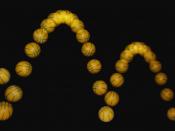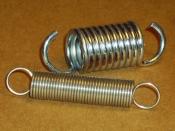1.0 Introduction:
The primary focus of the following document derives off the concept of work and energy, and in particular Elastic Potential Energy (EPE) and the properties of springs.
Elastic objects contribute to our contemporary lifestyles in many ways. They provide suspension in our cars, allow us to bungee jump and also bounce on trampolines. Springs can be found all over the place - in computers, video players, pens, and in beds.
To begin with, an object is considered "elastic" if it can return to its original shape after experiencing a deforming force (Hewitt, 1987). For example, when an archer pulls back the string on a bow the bow bends. When the string is released, the bow will return to its original state, therefore it is considered to have elastic properties (Welding R. et al, 2004, p. 231).
Elastic potential energy describes the energy stored in a spring or other elastic body by virtue of its change in shape (Walding R.
et al, 2004). Elastic potential energy can be interpreted by the following equation:
An interesting property possessed by springs is the relationship between the force applied to a spring (N) and the amount the spring extends (m) as a result of this force. English scientist, Robert Hooke, was the first to publish this relationship in the 1600's. He found that the extension a spring experiences is directly proportional to the force applied, as seen in the equation below, where x is equal to the extension in metres, F is equal to the force applied in newtons and k is the spring constant:
The negative value of k is used to represent the direction of the force applied, in relation to the extension of the spring.
2.0 Aim:
The aim of this practical experiment is to determine the spring constant...


